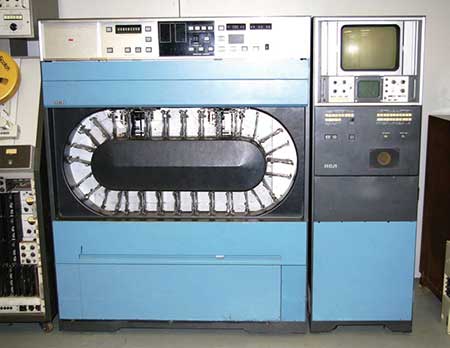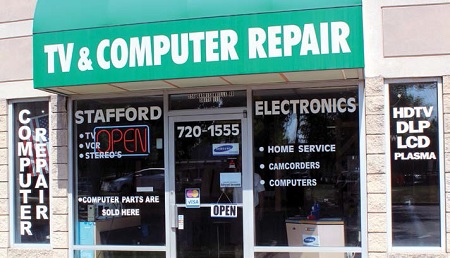The VCR Fades to Black
ALEXANDRIA, VA.—Like many consumer products, the home videocassette recorder has shrunk a lot over the years, going from carry-on luggage-sized steel boxes weighing 30 pounds or more, to lightweight plastic packages not much bigger than the cassettes they played. Now the VCR is shrinking again; this time to non-existence as Japan’s Funai Electric. Co.—the world’s last manufacturer of the once “must-have” devices—announced it was making its last VCR production run last month.

Sony’s Betamax VCR helped paved the way for video recording technology’s widespread entry into the home. Funai cited lack of demand and difficulty in obtaining parts as factors in making the decision to terminate VCR production. (Sales had dropped from a high of around 15 million machines at the VCR’s peak of popularity to just some five percent of that number last year.) Most of the U.S. “big box” consumer electronics stores stopped carrying VCRs around 2005, and Sony, who in 1975 had fueled widespread consumer interest in home video recording with the introduction of their Betamax product, ended VCR production in 2002.
While not quite as popular as the transistor radio, millions of the machines were sold as prices steadily dropped from the hefty $2,500 (more than $11,000 in today’s money) of Sony’s initial LV-1901 recorder/TV combo package to less than $100 in later years. Beginning in the early 1980s, the VCR—coupled with a small color camera (and later combined as the “camcorder”)—began to upset long-established 8mm home movies as the technology of choice for capturing weddings, vacations, and other personal events. By the 1990s, film had become passé, forcing most home movie camera manufacturers to abandon that market. VCR sales continued to boom as prices fell, with more and more TV owners acquiring the devices to allow time-shifting of favorite programs (and commercial skipping). VCRs also served as an early form of “video-on-demand,” with an increasing number of Hollywood movies made available for both sale and rental. (At its peak, Blockbuster Video Entertainment operated some 9,000 stores to address this demand.)
THE DEMISE OF A TECHOLOGY

RCA’s TCR-100 broadcast machine was the first self-loading videotape recorder. Did it influence the design of later home video recorders? While the videocassette recorder enjoyed a very good run, just as was the case with Edison cylinders, wire recorders, audio cassettes and other “high tech” consumer devices of the day, it was destined eventually to succumb to technological progress. This began with the arrival in 1995 of the DVD, and a few years later, the digital video recorder. The advent of home-recordable DVDs and inexpensive high-capacity solid- state storage cards further helped to change the consumer video recording landscape. Another nail in the VCR’s coffin was the maturation of the Internet and development of high-quality video streaming technology. Blockbuster filed for bankruptcy protection in 2010, and today streaming video services rule the roost when it comes to viewing movies at home.
Home video recording had its start long before the advent of the VCR, going back to the early 1960s and the development of “portable” video recorders—models that were not tethered to the high-amperage electrical service, compressed air lines and skilled operators required by the broadcast machines of the day. Ampex began selling its first portable VTR, the VR-1500 2-inch helical machine in 1963, and despite a hefty price tag of nearly $12,000 (about $95,000 in 2016 dollars), some of the machines found their way into the homes of the very wealthy. Ampex and others continued to develop helical scan technology during the 1960s, producing smaller tape format VTRs with correspondingly smaller price tags. By 1969, The Electronic Industries Association of Japan (EIAJ) had standardized a one-half inch open-reel format that gained some consumer acceptance, but machines were still pricey and required user intervention (threading of tape).

electronics repair shops such as this one owned by Bahman Jaldi in Stafford, Va., once stayed very busy keeping Vcrs in tip-top shape. That skill is now destined to become another “lost art.” Possibly spawned by RCA’s 1969 showing of a two-inch broadcast-type video recorder (the TCR-100) that could automatically thread tape packaged in cartridges, Sony, in late 1971, began marketing its first small-format (3/4-inch) self-loading recorder, the U-Matic. Like Ampex’s VR-1500, the U-Matic was intended for industrial and educational purposes, but some of the machines did wind up in private homes. Other self-loaders soon appeared that were directed to consumers. These included AVCO’s “Cartrivision” recorder which appeared in 1972 and was packaged with a TV set, and the Philips “Video Cassette Recorder” or “VCR,” which went on the market the same year. Neither was an instant success due to high prices, poor image quality and reliability issues; both eventually fell by the wayside. (AVCO’s entry was withdrawn after only a year.)
The professional video industry's #1 source for news, trends and product and tech information. Sign up below.
The first really successful consumer VCR was the Betamax, introduced by Sony in mid-1975. Less than a year later, JVC introduced a rival, the VHS machine and ignited a “war” of formats that raged for more than 25 years before Sony ultimately ran up the white flag and ceased production. During the war, both formats underwent numerous improvements, including greatly upgraded audio and video; however, to today’s consumers—conditioned to high-definition digital video and multichannel audio—neither format would be deemed worthy of a second look.
A DECLINING MARKET IN ALL SECTORS
The VCR’s demise has been felt in areas other than retail outlets. Bahman Jaldi, owner and operator of an electronics repair shop in Stafford, Va., and a repairer of VCRs for more than 25 years, was asked about demand for such services these days.
“I would say that in the last five years I’ve repaired a total of three or four machines,” said Jaldi. “At the peak [of the VCR], it was maybe seven to 15 per week. The only reason people have VCRs [anymore] is to use them to convert old family recordings to DVDs. Most people use Netflix or Hulu to watch movies and their personal video recordings go to the cloud or to a hard drive at home.”
Jaldi noted that like Funai, he was having an increasingly difficult time obtaining parts for the few repair jobs that did cross his bench.
The shutdown of Funai’s VCR production line also signals the end of the 60-year run of a technology that began on April 14, 1956 at the Chicago NARTB (now NAB) Show when Ampex introduced the world’s first practical videotape recorder.
